

Click on the images to ENLARGE.
A triggerplant has a spring-loaded touch-sensitive column hidden under the petals which flicks over when an insect lands on the flower for a feed of nectar.
At the end of this column is the male and female parts of the flower. (anther and stigma)
This action either deposits or collects pollen depending on the cycle of the plant.
 Pollinator
Pollinator
The pollen filled anthers (male) appears first on the young flower, then as it matures the sticky stigma (female) takes over and is ready to collect pollen. This cycle prevents self pollination.
Most of the bees I have seen visiting these flowers have a worn spot on their back where they have been repeatedly whacked by the column.
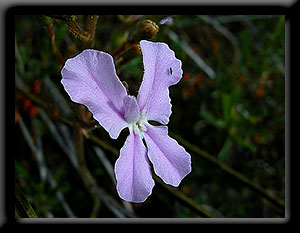 Stylidium affine
Stylidium affine
The small lobes in the centre of this beautiful Queen Triggerplant prevents access to the nectar unless the insect lands on the lower petals.
The clever design of the flower forces the insect to land on the same position each time.
 Stylidium bulbiferum
Stylidium bulbiferum
These plants are amazingly precise.
To avoid producing hybrids, different species of triggerplants have various shape and lengths of the column, which can strike from under, over or even from the side.
Therefore an insect visiting two species can be struck at different locations on the body.
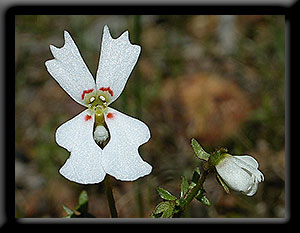 Stylidium calcaratum
Stylidium calcaratum
These triggerplants strike the insect on the underside of the abdomen like
"a punch in the guts". ![]()
So named because the flower closes like a book at night or in cold weather.
 Stylidium dichotomum
Stylidium dichotomum
After the column has been triggered it gradually resets, usually within an hour, ready to assault another innocent insect looking for nectar or pollen.
About 70% of the world's 250+ known species of stylidium occur only in the South-West of Western Australia, highlighting this area as the major center of triggerplant evolution.
Stylidium is the fifth largest genus in Australia.
Click on this image to see the trigger action in more detail.
 Stylidium hispidum
Stylidium hispidum
Stylidium are believed to be carnivorous (or protocarnivorous).
It has been reported that the numerous sticky glands on the flowering parts of triggerplants secrete enzymes to trap and digest tiny insects.
If this proves to be true, the addition of this genus would almost double the number of known carnivorous plants.
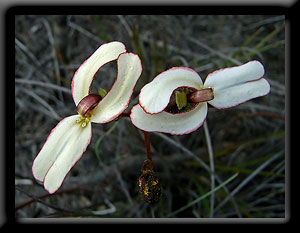 Stylidium schoenoides
Stylidium schoenoides
The largest of all triggerplants and named for the powerful 'kick' when triggered.
These are only 5cm (2in) tip to tip, so most stylidium flowers are very small.
Small children are advised not to touch these flowers.
![]()
 Stylidium brunonianum
Stylidium brunonianum
Class: Gymnospermae
Subclass: Dicotyledonae
Superorder: Asteridae
Order: Campanulales
Family: Stylidiaceae
 Stylidium brunonianum
Stylidium brunonianum
The innocence of the flower belies the mamba-shaped head of the column, ready to strike and just as fast.
Click on the image to see this in detail.
 Stylidium breviscapum
Stylidium breviscapum
Boomerang Triggerplant - Stylidium breviscapum
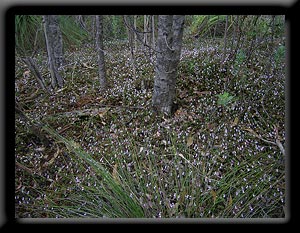 of Triggerplants
of Triggerplants
For more detailed information check out the Wikipedia Triggerplant page.
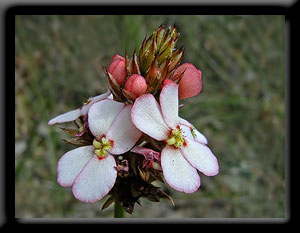 Stylidium junceum
Stylidium junceum
More stylidium images